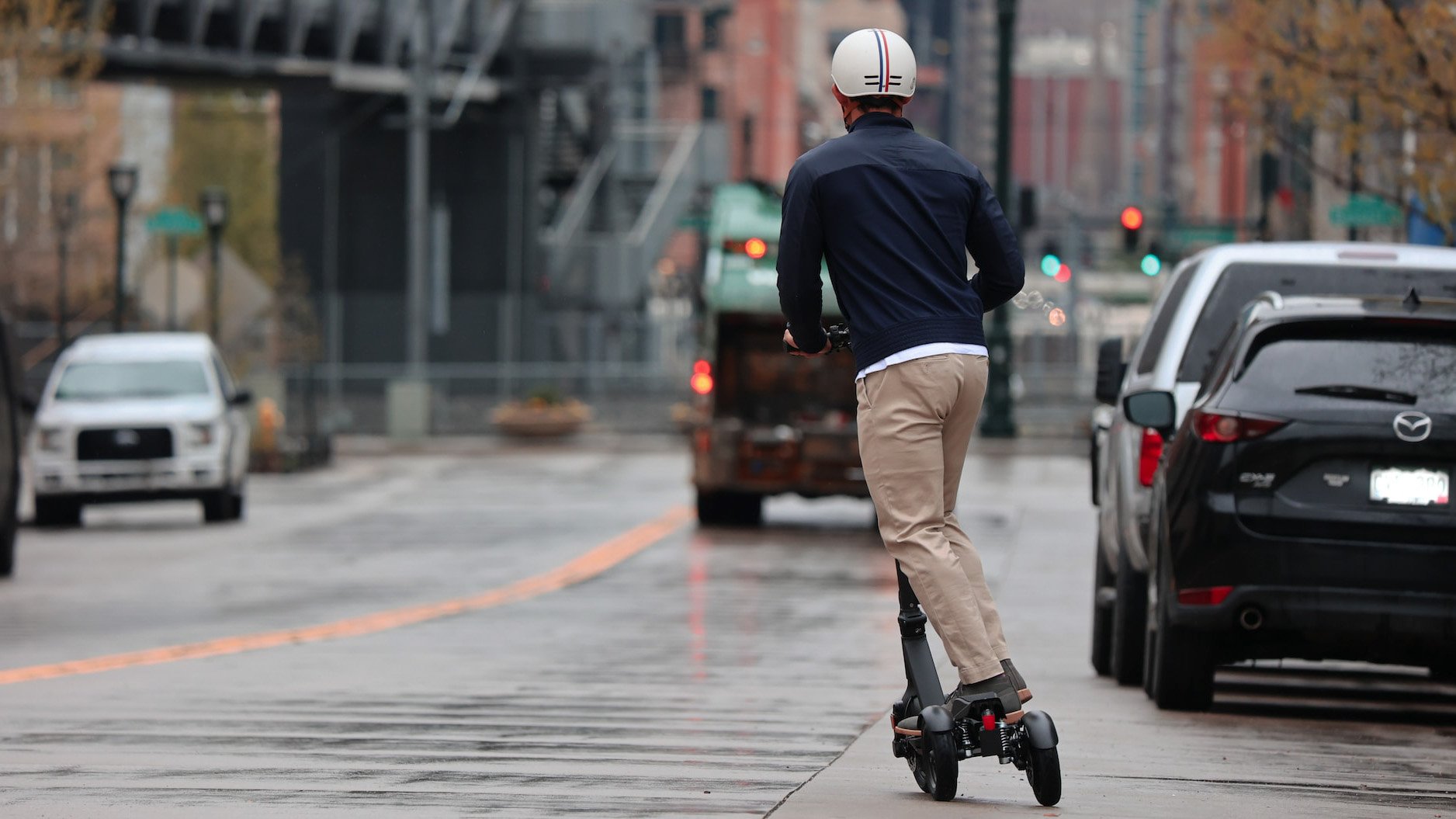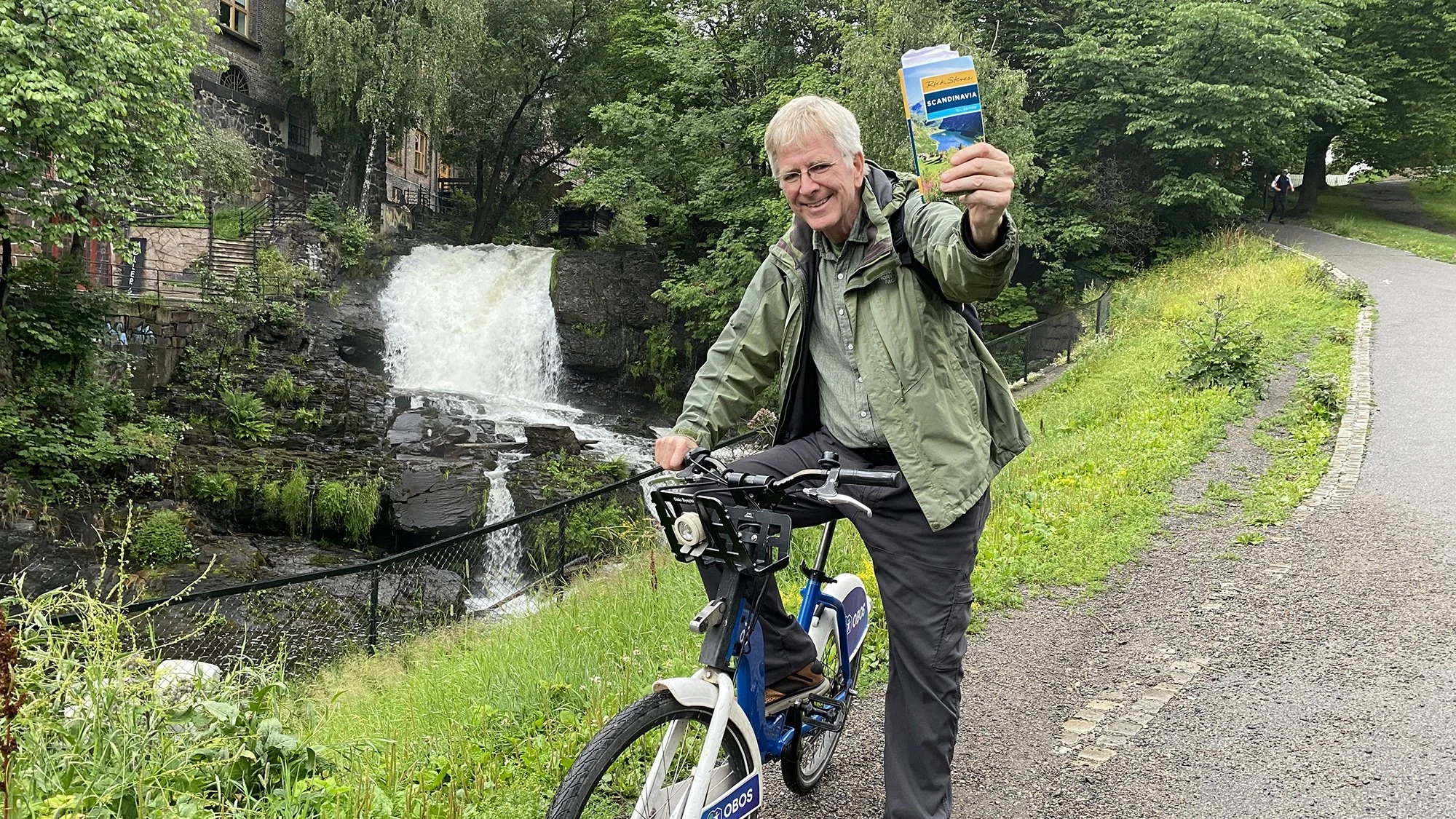What “Getting My Steps In” Has Taught Me About Walkability
(Source: Unsplash/inbal marilli.)
About a year and a half ago, I did something that was completely out of character. If you’d asked me even six months earlier whether this was something I’d ever do, I probably would have laughed and said, “Never!” But today, I will tell you that it’s now something I recommend to everyone, and I’m sorry I didn’t do it sooner.
Here’s the big reveal: I started wearing a Fitbit.
That I, a devoutly non-athletic person, went out of my way to purchase something called a “fitness tracker” is almost unbelievable to me. But the decision was the culmination of a couple things. First, a close and similarly un-sporty friend got one and raved about it and how it was helping them move their body a little more—something that many of us, including me, were struggling with in the depths of the pandemic. I’d been working from home since long before COVID and knew I was not getting enough physical activity, in general. I trusted that if they thought it was good, it probably was.
Between work, family, and volunteering, getting out for an hour-long walk wasn’t always possible. I was already walking fairly often as a matter of course in my daily errands and activities (my family doesn’t own a car, so we primarily walk, bus, and bike), but I really had no sense of how much. I figured that aiming for 10,000 steps throughout the day would be the next best thing to getting out for an hour-long walk.
And so it was that I joined the cult of “getting my steps in.” Although my fitness tracker has many neat features, the thing I primarily use it for is the step counter; the accompanying app tells me I’ve walked over 5 million steps since I first started wearing it. Although I do like to get to 10k each day, I don’t obsess over it. More than anything, I see it as a measure of how much I’ve moved that day.
Those early days of being a Person Who Wears a Fitness Tracker were interesting. One of the first things I noticed was that when I set out to “get some steps,” they accrued much less quickly than I expected. A watched pot never boils, so the saying goes. To me, it felt like a watched step count never increases.
I could go out for a 30-minute walk and come home with only 3,000 steps. I also noticed that the feeling of productivity—being busy and getting things done—doesn’t always align with actually having used my body to accomplish anything. Every once in a while, I’ll plan a box store shopping blitz and get a co-op car to make this trip happen. I drive to another part of town and spend a few hours popping in and out of stores, moving the car, checking things off my list and filling the trunk. At the end of the day, to my dismay, I’ll find it’s only a couple thousand steps, accumulated mostly from walking across parking lots and inside stores. It’s a strange, mild cognitive dissonance.
On the flipside, it’s not uncommon for me to get home from running errands on foot (and even when also using the bus) to find my steps have added up surprisingly quickly. A step is, of course, a step, regardless of where you take it. But there’s some sort of psychological reward for having racked up a bunch of them in the course of doing something else.
The biggest takeaway for me? The built environment has a massive influence on how easy it is to get steps. In some places, getting steps is a byproduct of just living, while in others, it’s more likely that you’ll need to set aside time for the explicit purpose of getting steps.
Jeff Speck’s seminal book Walkable City distills the formula for optimum walkability into four key conditions: walks must be useful, safe, comfortable, and interesting. I could write an essay about each of those! But in my quest to get steps, I find that the most important condition is the useful walk, because those are the steps that replace what would probably have been a sedentary vehicle trip.
My neighborhood has many places to walk that would earn points under “comfortable, safe, and interesting,” or some combination of the three. We have sidewalks, fairly good tree cover, several parks and a beautiful, park-like historic cemetery with wide, paved paths. It’s pretty easy to just go for a nice walk here, and I often do. In good conditions, a brisk walk or a long, leisurely stroll (preferably with a podcast or a pal) is a great way to relieve stress, get fresh air and exercise, and enjoy nature.
Obviously, there’s a lot to love about just going for a walk. But no one has more than 24 hours in a day, and to me, it also feels pretty good to get a bunch of steps in while also getting stuff done or doing fun things, like grabbing groceries, hitting up the library, or meeting a friend for coffee. I feel better in my body, I feel more connected to my neighbors and my city, and I support the local businesses I want to see succeed. A day of useful walking is a great day, in my book.
But, without destinations to support useful walks, a walk is just a walk. The high street in my own neighborhood, Henderson Highway, really has only one thing going for it: restaurants, businesses, services, and bus stops. While it was once a thriving streetcar suburb main street where residents could meet virtually all of their daily needs, the past 50-odd years of auto-oriented policy have left it unsafe (my husband would call it “the stroadiest stroad that ever stroaded”) and uncomfortable. And that lack of safety and comfort is probably the reason that there’s not much that’s interesting about it (though strong citizens in my area are working to change that). And so thankfully, although Henderson isn’t pleasant or comfortable, it is a destination-rich end point for useful walks. Plus, being relatively well-served by transit, it also gives me convenient access to a “walking accelerator” and therefore, even more destinations.
Henderson isn’t the only place I can take a useful walk. I’m walking with a purpose when I saunter over to the yoga and dance classes held in the basement of the big brick church that’s plunked right in the middle of the neighborhood, or a board meeting at the community center. Same goes for walking with my kids to their haircuts and activities like piano lessons, curling, or art classes. Sometimes it just takes the smallest mission to get me out the door, like a quick stop to mail a letter at the post box, or a walk down the street to the Little Free Library to swap a book. The interesting thing about useful walking is that it’s sort of addictive. The more I do it, the more I seek out additional destinations, all of which are great for my step count.
There are any number of ways to look at walkability and why it’s good for cities: financial productivity and neighborhood livability, climate action and civic engagement, social connectedness and equity... But lately, I’ve come to appreciate that, at its very core, walkability lets humans do what humans are designed to do: move!
In North American society, there’s a tendency to see health benefits as nice-to-haves, or bonus side effects. If cities strive to meet the basic physiological human need to move our bodies, they may be pleasantly surprised at how everything else just falls into place. And then, perhaps, we wouldn’t need fancy gadgets to tell us to walk more.





Maddy Novich is a criminal justice professor at Manhattan College, a mom of three, and an Instagram influencer living in New York City—you might know her as @cargobikemomma!